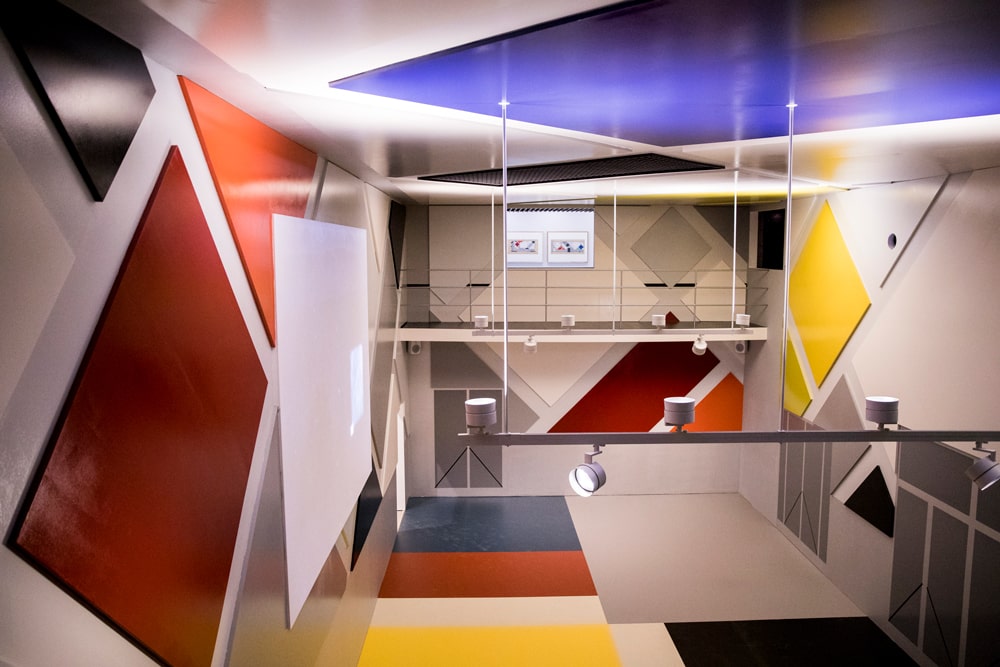
Ten’s To See: ‘Into The Night: Cabarets And Clubs In Modern Art’ At The Barbican
Where we go after hours – what we do there, who we do it with, and what we listen to while we do it – is of the ways we enact ideas about who we are. Some people go clubbing out of pure love for a certain genre of music, others simply because they vibe off the feeling of sweating to the same beat as a room full of strangers. Some are on the pull and others are just trying to make friends. Subcultures spill out of night clubs and into the real-world as they become homogenised. Political and artistic movements are nourished by the communities found there, and then end up either smothered or galvanised when those spaces are shut down.
It’s no surprise then, that there has been a lot of interest in examining the recent history of clubbing of late, looking back at yesterday’s scenes to try and understand what they can tell us about today. The Saatchi Gallery just closed their mammoth show on the history of British rave culture, and Jeremy Deller’s seminal Everybody in the Place documentary about the UK’s Acid House scene is currently streaming on iPlayer. At a time when the country is frothing with division, it’s tempting to try to find answers about where it all went wrong by looking back at these mini moments of dance floor utopia.
The Barbican has gone a little further back in time with their latest show, Into the Night: Cabarets and Clubs in Modern Art. Spanning from 1880 to 1960, the exhibition looks at specific cabarets, cafes and clubs from around the world, and through them presents an alternative history of modern art that focuses on collaboration and inspiration. Rooms are dedicated to the hotspots – from Vienna to Mexico City, Ibadan to Osogbo, Harlem to Tehran. Each one is shown to have defined its own era and birthed its own cultural movement. Recognisable artworks are displayed alongside posters, programmes, manifestos, photographs, interior designs, furniture, libraries and endless other fascinating pieces of ephemera.
The litany of names that are associated with each club is overwhelming in its familiarity. Here are Degas, Monet and Toulouse-Lautrec gathered on the shadowy walls of the Chat Noir Theatre in Paris, there are Chinua Achebe and Wole Soyinka amongst writers, artists and Yoruba opera performers in the Mbari clubs of Nigeria. Over in Harlem, poet Langston Hughes is inspired by the same jazz clubs that Zora Neale Hurston writes about with intoxication. Meanwhile in Mexico the seeds of the Stridentist movement are sewn, and Dadaism is born in the midst of WWI at Cabaret Voltaire in Zurich. These were hybrid spaces where revolutionary minds met to eat, drink, dance and be entertained. Spinning out from these spaces came literary movements, art forms and political statements. Inspiration seems to be fizzing and bouncing between the displays like an electric current.
Fittingly huge murals and installations covered the walls of these clubs: seven thousand tiles plastered Vienna’s Cabaret Fledermaus in fantastical motifs, while Rome’s Cabaret del Divolo was painted floor to ceiling with representations of Dante’s Inferno, split across three rooms representing Hell, Purgatory and Heaven. These were spaces created by and for artists, not club promoters or venue chains, every element of which had been deliberately designed, from plant-pots and lapel pins to chairs and ashtrays. In this way their audience became self-selecting – hedonists or intellectuals, like attracted like within a creative orbit. Rather than enforce strict door policies these spaces tossed out tongue-in-cheek advice to their patrons. Le Chat Noir coyly asked visitors to “be modern”, while the Cabaret del Divolo simply declared “Everyone to hell!!!”. On the other end of the spectrum, London’s The Golden Cow was snootily egalitarian: “Art will be welcomed by us, provided it brings with it, from whatever milieu it comes, either life or beauty”.
While it would be impossible to recapture the feeling of these clubs outside of their political and cultural climates, looking through all of their history does make you long to visit them. Happily, the final section of the exhibition is made up of full-scale recreations of some of these spaces, including the incredible Cine-Dancing room designed by Theo van Doesburg for L’Aubette in Strasbourg, and the shadow-theatre of the iconic Chat Noir. A soundscape has been designed for the exhibition by acclaimed artist Haroon Mirza, but crucially it will also be the site of some actual after-hours activities. Exploring these club spaces in a well-lit gallery empty of people and noise gives you an appreciation for the way they were designed, but can feel eerily soulless. Recognising this, the Barbican has programmed a series live musical evenings to give a better sense of the atmosphere of the recreated clubs, curated by Jazz trumpeter Mark Kavuma.
The speakeasies of Harlem, which broke prohibition laws, are perhaps the most daring spaces mentioned. They were places where African Americans could celebrate their art away from the mainstream jazz clubs which they could only perform in, being barred from entering as patrons. Looking over these rooms it feels like a second exhibition should be running parallel to this one, highlighting the truly counter-cultural spaces these aggressively marginalised groups had to make for themselves.
Into the Night: Cabarets and Clubs in Modern Art runs 4 October 2019 – 19 January 2020 at the Barbican. Image courtesy of Tristan Fewings / Getty Images.
barbican.org.uk